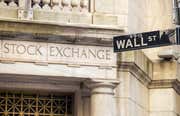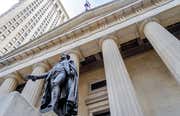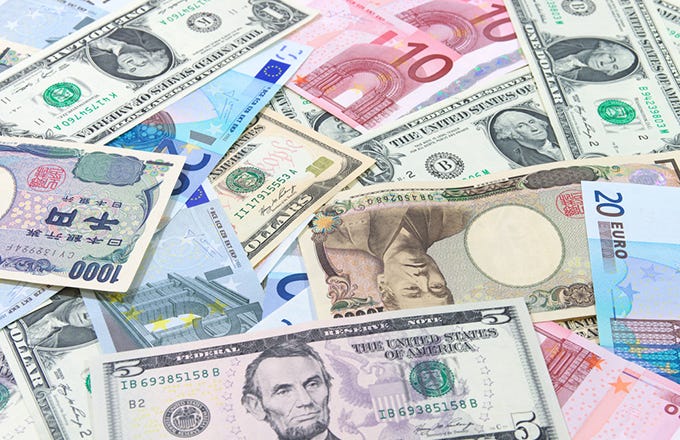The five biggest ETFs, ranked by assets under management (AUM) as of November 10, 2017, are described below -
- SPDR S&P 500 ETF Trust (SPY): AUM $247.6 billion, Average Volume 64.96 million shares. Launched in January 1993 by State Street Global Advisors, SPY was the very first U.S.-listed ETF, and its success was instrumental in jumpstarting a trillion-dollar industry. The Trust seeks to provide investment results that, before expenses, correspond to the price and yield of the S&P 500. The fund’s gross expense ratio (total annual operating expense ratio) was 0.0975% as of November 2017. As of October 31, 2017, SPY had generated annual returns of 9.45% since inception. (Related: What Are SPDR ETFs?)
- iShares Core S&P 500 ETF (IVV): AUM $134.8 billion, Average Volume 3.38 million shares. This ETF was launched in May 2000 by iShares, when it was part of Barclays Global Investors. The ETF’s benchmark index is the S&P 500. It has an expense ratio of only 0.04%, making it an extremely cost-effective way to gain exposure to U.S. large cap stocks. As of October 31, 2017, IVV had generated annual returns of 5.30% since inception.
- Vanguard Total Stock market ETF (VTI): AUM $87.4 billion, Average Volume 2.02 million shares. The third-largest U.S. ETF seeks to track the performance of the CRSP US Total Market Index, which includes large-cap, mid-cap and small-cap equity diversified across growth and value styles. Launched in May 2001 by industry heavyweight Vanguard, VTI employs a passively-managed, index-sampling strategy and has an expense ratio of 0.04%. As of October 31, 2017, VTI had generated annual returns of 6.97% since inception.
- iShares MSCI EAFE ETF (EFA): AUM $81.7 billion, Average Volume 14.80 million shares. This ETF seeks to track the investment results of an index composed of large-cap and mid-cap developed market equities, excluding the U.S. and Canada. It provides exposure to a broad range of companies in Europe, Australia, Asia and the Far East (better known by the acronym EAFE). The ETF has an expense ratio of 0.33% and was trading at a 0.12% discount to NAV as of November 10, 2017. Since its launch in August 2001, the ETF has returned 5.65% annually.
- Vanguard S&P 500 ETF (VOO): AUM $79.8 billion, Average Volume 1.68 million shares. Launched in September 2010 by Vanguard, the ETF tracks the S&P 500. It has an expense ratio of 0.04% and has returned 15.12% annually since inception.
While three of the top five ETFs track the S&P 500, the next five are a more diverse lot, as shown below –
- Vanguard FTSE Developed Markets ETF (VEA): AUM $65.9 billion
- Vanguard FTSE Emerging Markets ETF (VWO): AUM $65.2 billion
- Powershares QQQ (QQQ): AUM $58.4 billion
- iShares Core U.S. Aggregate Bond ETF: AUM $51.6 billion
- iShares Core S&P Mid-Cap ETF: AUM $41.6 billion
With the ranks of the biggest ETFs dominated by iShares and Vanguard, it should come as no surprise that the two are the biggest ETF providers in the world. Here’s a ranking of the top five U.S. ETF providers, based on data from ETF.com as of November 9, 2017 –
- Blackrock(iShares): AUM $1.30 trillion
- Vanguard: AUM $823 billion
- State Street Global Advisors: AUM $575 billion
- Invesco PowerShares: AUM $137.5 billion
- Charles Schwab: AUM $92.5 billion
Blackrock has become the ETF industry juggernaut through its acquisition of iShares owner Barclays Global Investors in 2009. The top five U.S. ETF providers manage close to $3 trillion, accounting for almost 90% of the $3.3-trillion U.S. ETF industry. The global dominance of the biggest ETF providers can be gauged by the fact that the top three – Blackrock, Vanguard and State Street – also account for over 70% of ETF assets globally.
Exchange-Traded Funds: Active Vs. Passive Investing
-
 Investing
Investing5 Popular U.S. Equity ETFs for 2016 (SPY, AAPL)
Discover 5 ETFs that investors might use to obtain exposure to portions of the U.S. stock market. -
 Investing
InvestingTop ETFs And What They Track: A Tutorial
This Investopedia tutorial provides an introduction to the leading exchange-traded funds by assets under management, broken down by market category. -
 Investing
InvestingAnother Assets Record for US ETFs
ETFs listed in the U.S. continue to hit milestones in assets under management. -
 Investing
InvestingLittle Guys Powering Big ETF Growth
Exchange traded funds continue growing at a torrid pace and retail investors are a big reason why. -
 Investing
InvestingGuide To ETF Providers
The exact number of ETFs on the market at any one time ebbs and flows, these twelve ETF providers offer hundreds of popular ETFs. -
 Investing
InvestingAre Vanguard ETF Fees Competitive?
Find out if Vanguard is still a leading low-cost ETF provider, and why investors should care about operating expenses as much as commissions. -
 Investing
InvestingThe 3 Fastest Growing Vanguard ETFs (VOO)
Discover three exchange-traded funds managed by the Vanguard Group that witnessed their assets under management grow most from December 2014 to February 2016. -
 Investing
InvestingThe 3 Largest Global ETFs (VEU, ACWI)
Discover the benefits of the largest global ETFs, including exposure to emerging and developed markets, the full range of market caps and utility-like payouts.



